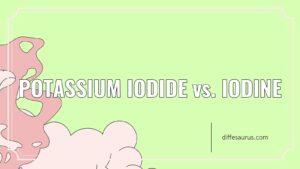In climates where there is excess humidity during the heating season, the heat recovery ventilator (HRV) is the best choice. A constant flow of fresh outdoor air is supplied by the HRV.
The heat in the exhaust air is used to preheat the incoming air. This saves money on heating bills because it reduces the amount of energy needed to bring outside air up to room temperature.
Will an ERV remove humidity?
The fresh air brought into your home by an ERV has a lower relative humidity than the air outside.
Is an ERV worth the money?
The answer is yes in most of the cases. The initial cost of purchase and installation of ERVs is high, but they are worth the investment.
Should I run my ERV continuously?
Outside, bathroom and kitchen odors should be exhausted. To maintain air quality set the ERV controls to the intermittent on off cycle and have a timer on bathroom fans so you can let them go for about 30 to 60 minutes after a shower. It’s a good idea to maintain this intermittent setting all year round.
Should I run my HRV continuously in winter?
Your HRV and ERV should be running continuously to make sure that your home is well-ventilated and has good air quality. Depending on the requirements, many HRV fans can operate at medium or high speeds. A common control strategy is to have the HRV run continuously at low or medium speed and then switch to high speed when the bathroom is in use or during highOccupancy periods.

How much does an ERV cost?
An ERV system costs more than a heat recovery ventilator, according to the Minnesota sustainable housing initiative. An ERV can cost anywhere from $600 to $1200 before installation.
Do ERV systems reduce humidity?
If outside relative humidity is higher than inside relative humidity, an ERV will raise indoor humidity. ERVs don’t have settings to maintain and control relative humidity or even include drainage for collected condensate, which is why they are not designed to remove humidity. An ERV raises indoor humidity due to the fact that the exchange of water vapor between the two airstreams is not equal.
Should I use an ERV or HRV?
For states with dry winters, an ERV is an excellent choice. It is possible that it is a better choice for areas that experience hot, humid summers. HRVs seem to be the ideal choice for these climates because they eliminate excess humidity in the air. If you’re battling humidity all season long, installing a system that allows it to stay in the house may seem counter-productive.
Which is better ERV or HRV?
Depending on the season, HRV and ERV systems only recover heated or cooled air, but ERV systems recover both heat and humidity.

What is better HRV or ERV?
The construction of ERVs makes them better suited for homes built before the 1970s.
What is a ERV system?
ERVs are used by homeowners, building contractors, and companies to improve the air quality in a space. If you’ve heard of the term ‘ERV’ but are just starting to think about it as an option for your home or business, your first question will be ‘what does an ERV do?’
Is HRV mandatory in Ontario?
The heat recovery ventilators with rated capacities of not less than 25 L/s and not more than 200 L/s will not be installed.
How much does HRV install cost?
The national average for an energy recovery ventilator is more than $2,000. The cost of labor, brand chosen, and whether you use an HRV or ERV are some of the factors that affect this number.
Do HRV systems reduce humidity?
An HRV system uses heat from the indoor air to preheat the outdoor air. An ERV system can also keep your home at an optimal humidity level by capturing some of the moist air from the outgoing air.



